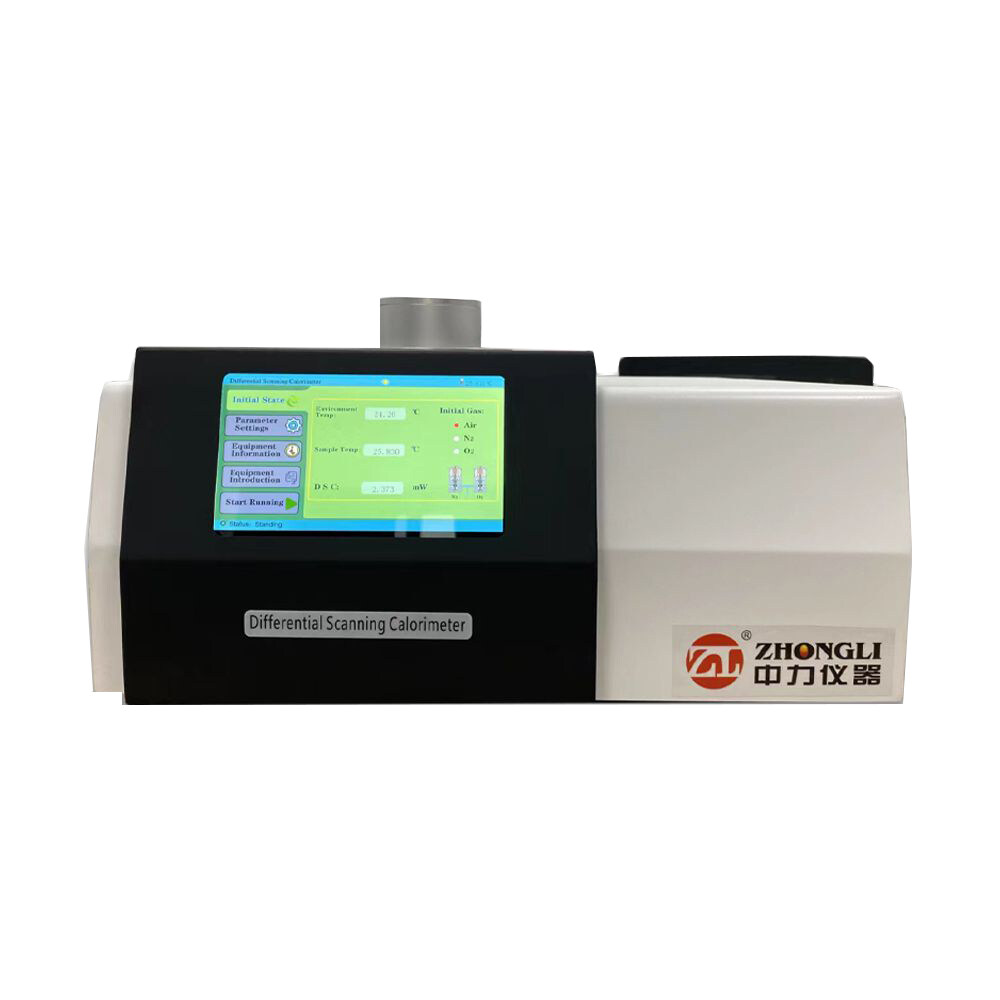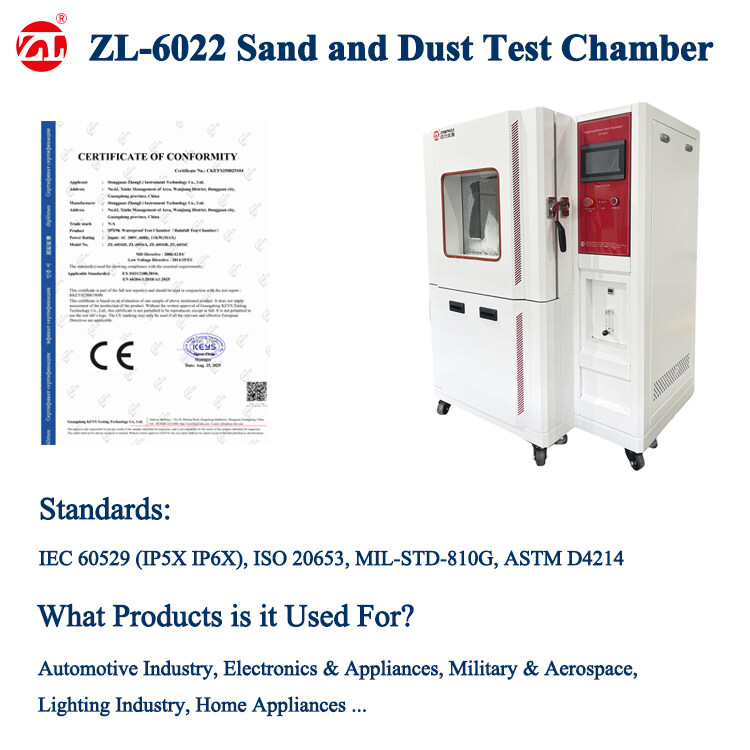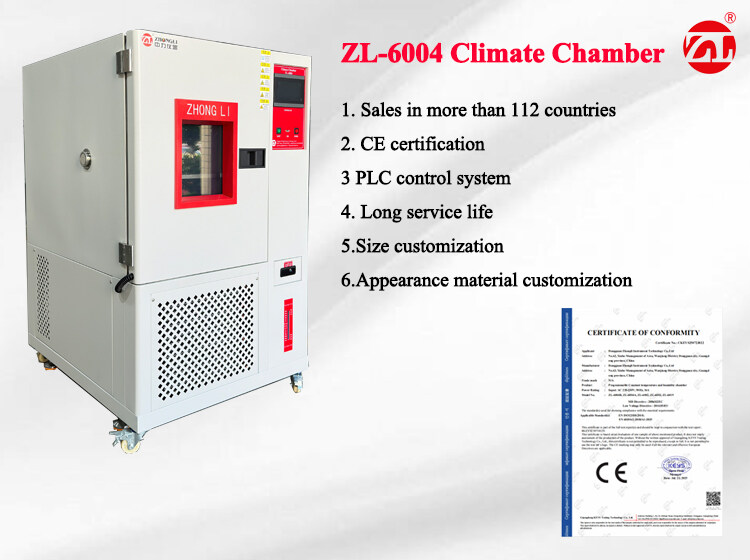ZL-3047A Differential Scanning Calorimetry (DSC) is an analytical technique used to measure the heat released or absorbed by a sample during heating or cooling over a specific temperature range. In addition to characterizing the thermal properties of materials, DSC is also employed to determine the temperatures at which specific phase transitions occur, including the glass transition temperature, melting, and crystallization events.
To perform a differential scanning calorimetry experiment, an instrument is required that can provide the necessary temperature range for testing and precisely monitor temperature and heat flow changes.
A heat-flux DSC instrument consists of a furnace where the sample and reference material are placed. The sample is encapsulated in a metal pan (typically aluminum), while the reference is usually an empty pan. The furnace is heated or cooled, and the heat flow characteristics are observed as they vary with temperature. Quantitative heat flow information can be determined from the measured temperature difference between the sample and the reference.
After all this technical talk, you might still be wondering—what exactly is DSC? Today, let’s break it down in plain language to understand its core principle.
In other words, DSC instrument contains two pans inside:
•One holds your sample
•While the other holds a “reference material” (typically an inert, empty crucible that undergoes no thermal changes).
Here’s why:
Imagine you’re cooking and want to detect if something in the pan is changing (like searing a steak). You have:
-
Pan A: Contains your sample (e.g., a steak)
-
Pan B: Empty (just the pan)
You heat both pans identically on separate but identical stoves.
If You Only Monitor Pan A:
You see its temperature rise, but you can’t tell:
-
Is the pan itself absorbing heat?
-
Is the steak cooking (endothermic reaction)?
-
Or is it just stove power fluctuation?
→ You learn nothing about the steak’s behavior alone!
But If You Compare Pan A vs. Pan B:
When Pan A heats up slower (because the steak absorbs heat to cook) while Pan B heats normally → You realize:
“Aha! Something in Pan A is absorbing heat—it’s undergoing a physical change (like melting or glass transition)!”
This Is the “Differential” Principle:
You’re not measuring absolute heat in Pan A—you’re tracking the heat flow difference between Pan A and Pan B.
|
Material Type |
Primary DSC Applications |
Common Parameters |
|
Fibers (e.g., Polyester, Nylon fibers) |
– Analyze crystallization behavior (crystallinity) – Evaluate adequacy of heat treatment/post-spinning processes – Check batch-to-batch consistency |
Tg, Tm, Cold crystallization peak, Crystallinity |
|
Films (e.g., BOPP, PET films) |
– Study thermal behavior differences before/after biaxial stretching – Analyze melting point distribution (detect polymorphic phases) – Investigate relationship between heat-sealability and crystallinity |
Tg, Tm, Crystallinity, Melting peak width |
|
General Plastics (e.g., PP, PE, ABS) |
– Determine crystalline/amorphous ratio – Identify raw material types (Tg/Tm as “fingerprints”) – Evaluate blending/modification effects |
Tg, Tm, ΔH (melting), ΔH (crystallization) |
|
Adhesives (e.g., Epoxy, PUR) |
– Assess reaction/curing degree – Analyze crosslink density – Distinguish thermoplastic vs. reactive types – Measure Tg to predict service temperature range |
Tg, Exothermic peak, Residual reaction heat |
|
Rubbers (e.g., EPDM, SBR, Silicone) |
– Correlate Tg with dynamic performance – Evaluate crosslink density changes |
Tg, Tg shift, Thermal history effects |
The following figure is a typical DSC curve showing four types of transitions:
Temperature coefficient is →

Ⅰ For a secondary transition, it is a change in the horizontal baseline
Ⅱ For the heat absorption peak, it is caused by the melting or melting transition of the test sample
Ⅲ For the heat absorption peak, it is caused by the decomposition or cleavage reaction of the test sample
Ⅳ is the exothermal peak, which is the result of the sample crystalline phase transition
Interpretation of DSC Graph Axes
X-axis (Horizontal Axis)
-
Represents: Temperature
-
Unit: Degrees Celsius (°C)
-
Explanation: Straightforward – shows the temperature ramp during heating/cooling.
Y-axis (Vertical Axis)
-
Represents: Heat Flow (also called Heat Power)
-
Unit: Milliwatts (mW)
-
Key Explanation:
-
The Y-axis does not show temperature or total energy.
-
It measures the heat flow difference between the sample and the reference pan to maintain the same heating rate.
-
Example:
-
If the DSC reads Heat Flow = 8 mW, it means:
-
The sample is absorbing heat (endothermic).
-
The instrument is supplying 0.008 J/s extra to the sample (vs. reference) to keep both heating at the same rate.
-
-
-
Slope (Rate of Heat Flow Change)
-
Definition: How quickly heat flow changes per unit temperature/time.
-
Interpretation:
-
Steeper upward slope → Heat absorption is accelerating (e.g., sudden melting).
-
Flatter slope → Heat flow changes gradually.
-
Steeper downward slope → Heat release is increasing (e.g., exothermic reaction starts).
-
Note: The “positive” or “negative” direction of peaks on a DSC curve is not absolute—it depends on the instrument’s heat flow direction setting.
Some of the international standards that DSC complies with are as follows.
| Standard No. | Scope of Application | Key Content |
| ISO 11357 | DSC Testing of Plastics | Glass transition (Tg), melting (Tm), crystallization, oxidative stability |
| ASTM E967 | DSC Temperature Calibration | Temperature calibration using reference materials (e.g., indium, zinc) |
| ASTM E968 | DSC Heat Flow Calibration | Heat flow signal calibration via melting enthalpy |
| JIS K 7121 | Japanese Industrial Standard (Equivalent to ISO 11357) | Basic methods for thermal analysis of plastics |
Material-Specific Standards
Polymers
-
ISO 11357-3: Crystallinity measurement
-
ASTM D3418: Melting/crystallization temps & enthalpy
-
ASTM D7426: Rubber Tg analysis
Pharmaceuticals
-
USP <891>: Thermal analysis validation
-
ICH Q6A: Polymorph detection (DSC is primary method)
Metals
-
ASTM E794: Metal melting point determination
-
ISO 17851: Oxidation behavior
Specialized Methods
| Standard | Test Type | Application Example |
|---|---|---|
| ISO 11357-6 | Oxidation induction time (OIT) | Polyethylene pipe stability |
| ASTM D3895 | Polyolefin OIT testing | Additive effectiveness |
| ISO 11357-4 | Heat capacity measurement | Composite materials |
Calibration & Validation










